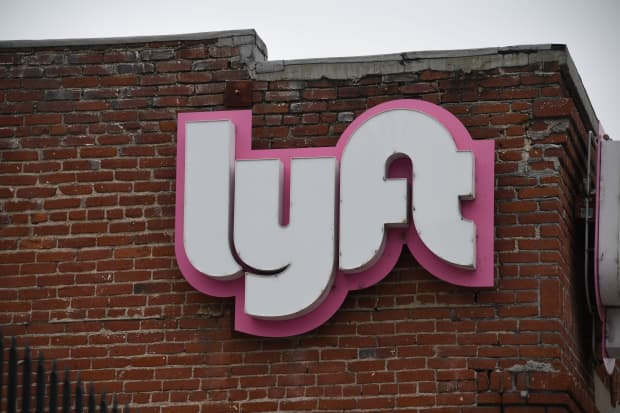This post was originally published on this site

Lyft reported second-quarter results Wednesday.
AFP via Getty Images
Lyft Inc.’s riders and revenue fell by more than half during a pandemic-dominated second quarter, but the company’s layoffs helped it top expectations for losses in an earnings report Wednesday.
Unlike its much-bigger rival Uber Technologies Inc. UBER, -1.18%, Lyft LYFT, -0.42% doesn’t have a food-delivery business to help offset the rides it lost during its first full quarter dealing with the COVID-19 crisis and a weekslong lockdown. Also unlike Uber, Lyft operates only in the United States and Canada, so it has no other markets where ride-hailing is returning to some semblance of normal.
“While rideshare rides in the quarter were down significantly year-over-year, we are encouraged by the recovery trends we are beginning to see, with monthly rideshare rides in July up 78% compared to April,” Chief Executive Logan Green said in a news release.
Lyft reported a second-quarter loss of $437.1 million, or $1.41 a share, on revenue of $339.3 million, down from $867 million a year ago. After adjusting for stock-based compensation and other effects, Lyft reported losses of 86 cents a share, worse than an adjusted loss of 68 cents a share a year ago but better than analysts expected due to roughly $50 million in reversals of previous stock-based compensation costs for laid-off employees. Analysts surveyed by FactSet on average expected Lyft to post an adjusted loss of $1.05 a share on revenue of $339 million.
Active riders dropped 60% in the quarter, to 8.7 million from 21.8 million.
Shares of Lyft rose more than 2% in after-hours trading immediately following the release of the report, after ending the regular session down 0.4% at $30.52. The stock is down 29.1% this year, as the S&P 500 index SPX, +1.40% has increased 4.4%.
In the announcement, Lyft executives focused on the effects of its cost-cutting measures, which helped the company beat expectations and, they said, will boost the company’s path to profitability.
“We continued to take aggressive actions to reduce costs and increase our underlying unit economics in the quarter, which has put Lyft on track to achieve $300 million of annualized fixed cost savings by the end of the year,” Chief Financial Officer Brian Roberts said in the announcement. “These steps position the company to achieve adjusted EBITDA profitability with 20%-25% fewer rides than originally contemplated in our fourth-quarter 2021 target.”
Lyft did not provide guidance for the third quarter in its statement. Executives will host a conference call to provide more information at 4:30 p.m. Eastern.
See: Uber’s delivery business tops core ride-hailing as pandemic rocks earnings
Lyft reported its results fresh after losing an important round in its continuing fight over classification of its drivers. In a closely watched case, a San Francisco Superior Court judge on Monday granted an injunction sought by California and the cities of San Francisco, Los Angeles and San Diego, saying that Lyft and Uber must within 10 days classify their drivers as employees instead of independent contractors to comply with a new state law — a decision the companies said they would appeal.
See: Uber and Lyft must make drivers employees because California law has ‘overwhelming’ edge, judge says


